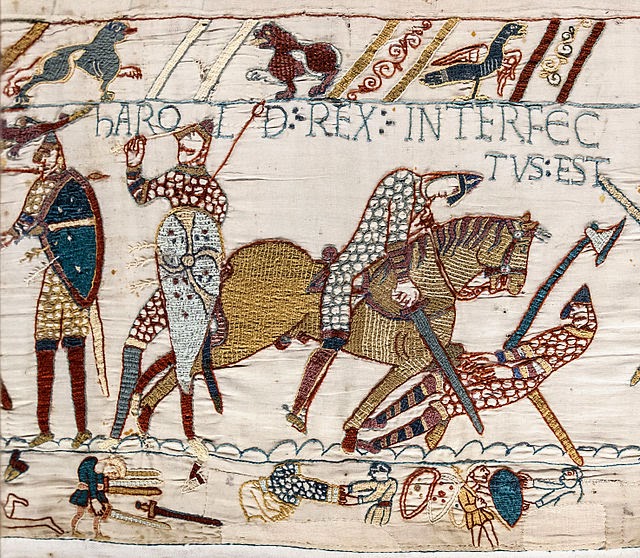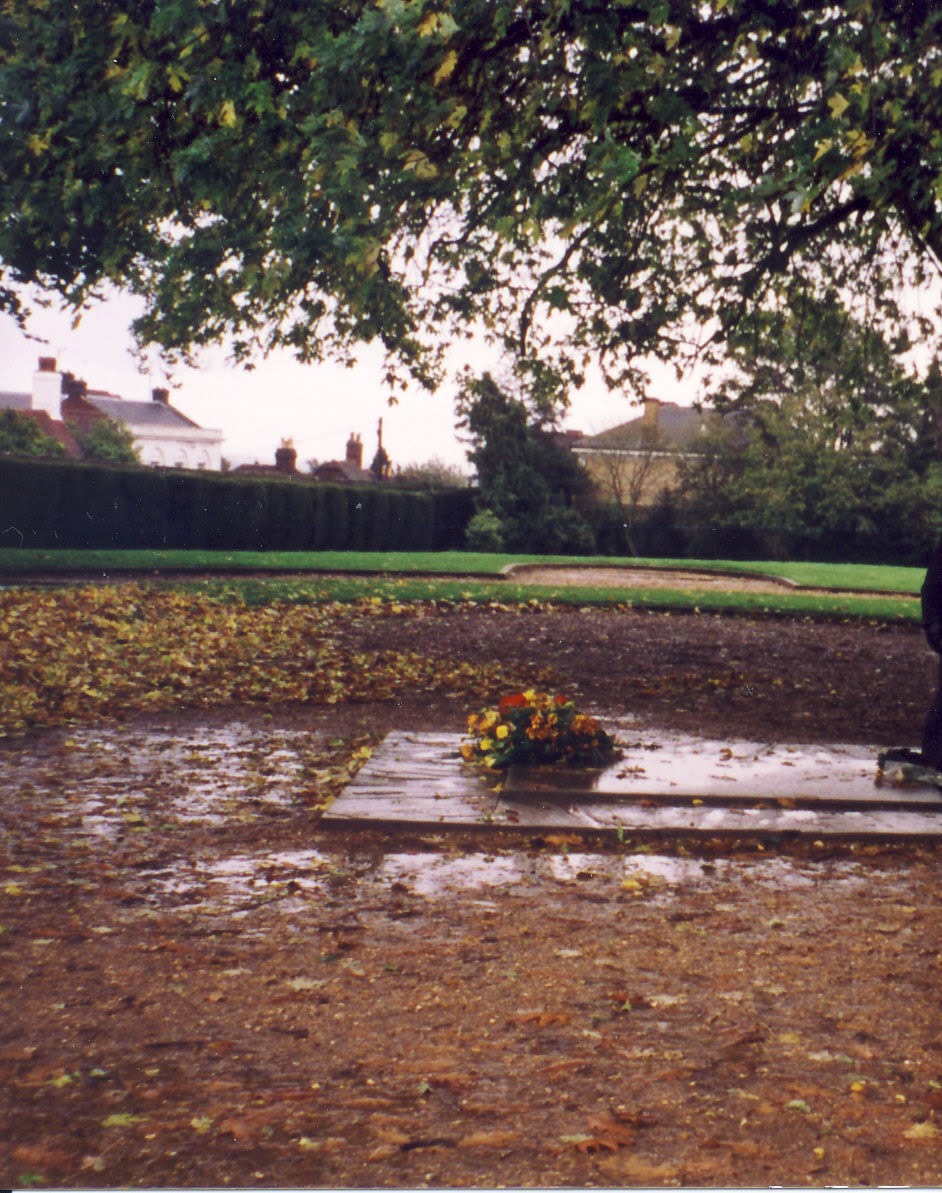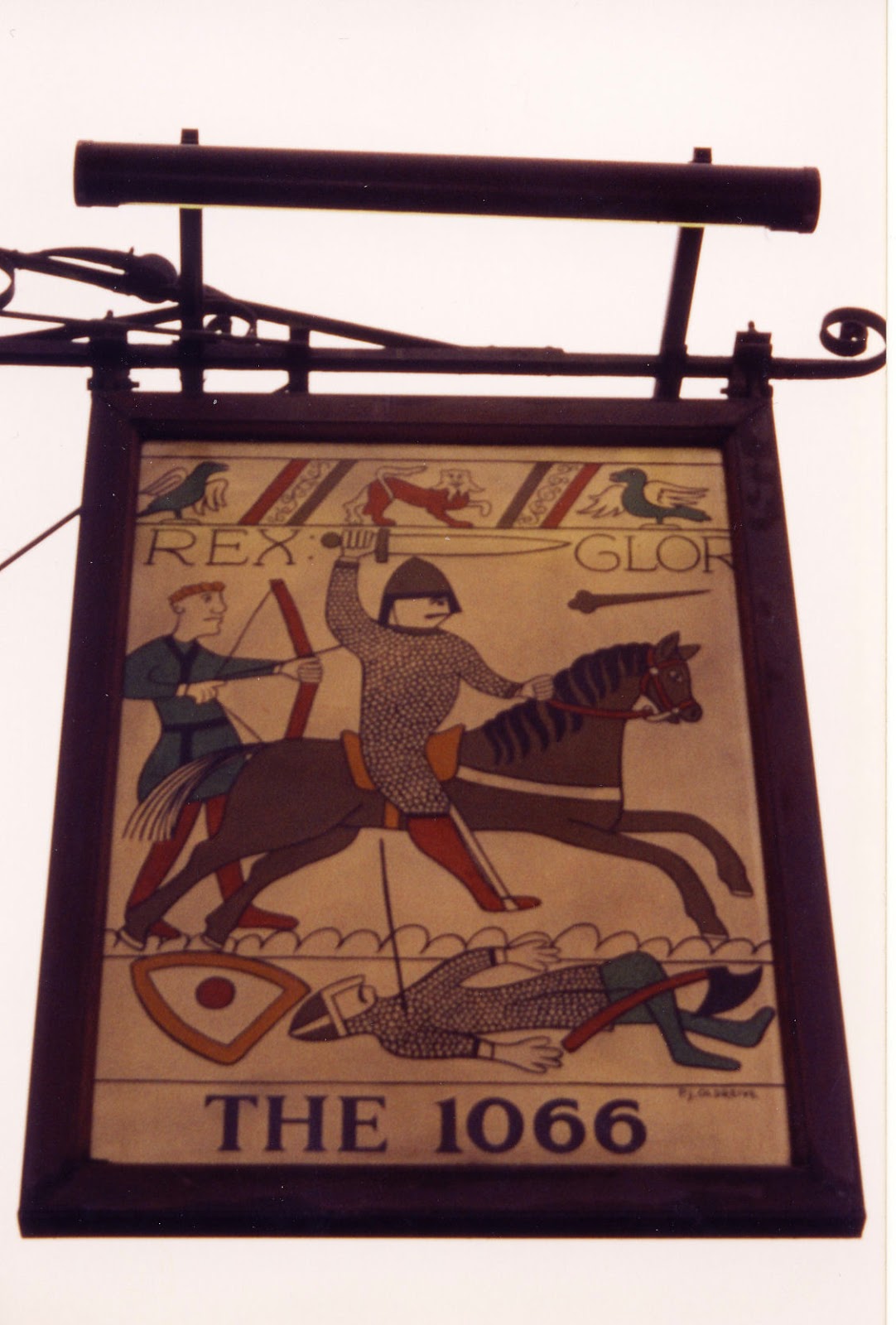On my recent trip to France, I fulfilled a lifelong desire to see the Bayeux Tapestry, that iconic portrayal of the Norman version of William I’s invasion and conquest of Britain in 1066.
Home of the Bayeux Tapestry
We were on a Viking River cruise on the Seine, starting and finishing in Paris. One day was devoted to a bus trip from the river to the D-Day Normandy Landing Beaches. On the way, we stopped in the charming town of Bayeux to see the tapestry.
An old mill, on the path from the car park to the museum
The tapestry is really woolen embroidery on linen, not a woven piece. Just who made it and when is a mystery, though the tale it tells — the Norman side of the story — indicates it was created by the women of the Norman court in England a few years after the Conquest. The controversy about its origins and the validity of its version of the Conquest remain contentious even today.
Odo, Bishop of Bayeux, in the Battle of Hastings
(pic from Wikipedia)
To see the entire tapestry, click here.
Two-hundred thirty feet in length, the Bayeux Tapestry was created to be shown in cathedrals and large churches to tell the story and justify the Norman Conquest. In fifty scenes, the story of King Edward’s (the Confessor, c.1003-1066) succession, the relationship of Harold, King of Wessex, and William Duke of Normandy. According to this version of the story, Harold is sent by the ailing Edward to France in order to deliver news of the King’s choice of successor to William, who will become King of England upon Edward’s death.
Edward gives Harold a message for William
Even the guides at the museum in Bayeux agree this version is “propaganda” from the Norman side of the historical record. The actual wishes of Edward the Confessor might have been less important than the vote of the Witenagamot, an assembly of powerful nobles. The Witenagamot actually voted for Harold after the Confessor’s death. But it is not necessary to view the Tapestry as the REAL story to admire it for its beauty and historical significance.
Harold’s Coronation as King of England
The tapestry was listed in the inventory of the Bayeux Cathedral in 1476; it was shown every year on the Feast of St. John the Baptist for centuries. Since being displayed in the Louvre, Paris, in 1797, it has been regarded as a national treasure.
scenes reproduced and for sale in the museum gift shop
Numerous replicas exist and the scenes from the narrative had been studied as excellent sources of information about life in the 11th Century. The particular excellence of the stitching is praised and the colors are today quite brilliant for such an old creation.
stitching details
In horizontal sections at the top and bottom of the tapestry, scenes of everyday life are portrayed, events of the day told, and animals depicted.
a comet
The Bayeux Tapestry has survived many wars and planned confiscation by Napoleon and the Nazis, among others. One hand-stitched replica was used in the filming of the recent movie The Monuments Men (2014). The original is now shown beautifully in its own Musée de la Tapisserie de Bayeux.
Museum Giftshop
A few years ago, I visited the site of the Battle of Hastings in Sussex where an audio tour leads one around the grounds, told in the voices of the women who were attached to the two leaders, Harold and William.
Site of the Battle of Hastings, 1066
Here, on the site of the death of Harold, William erected an Abbey, now partly in ruins and partly school.
Death of Harold, Bayeux Tapestry
Site of the High Altar, said to be where Harold fell
As we walked around the ruins on that October day, we noticed flowers on the site of the High Altar. We when looked closely, we got chills! Here was a tribute, almost thousand years later.
It reads: “King Harold: Unconquerable Except by Death, 14 Oct, 1066”
Pub Sign in Battle, Sussex
Of course, the pub owner could not resist!! We settled in, actually for a pot of tea, after our encounter with the Abbey, the battle and the flowers left by admirer from centuries after the fighting. Battle, the spot where the conflict took place and the town named so cleverly, is a few miles inland from Hastings, where the Norman fleet landed on the coast.
Bayeux Cathedral
Returning to my trip of 2014, we left the Tapestry to go to the Bayeux Commonwealth War Graves Commission Cemetery, where more than 4,600 are buried. A marble memorial stands at the entrance.
The Inscription reads (in Latin) “We, once conquered by William,
have now set free the Conqueror’s native land.”
Chills once more!!
To conclude the day, we toured the Normandy American Cemetery and Omaha Beach, accompanied by many more chills of appreciation.
The Memorial at the American Cemetery
Among the 9,400 graves
Omaha Beach
Les Braves, memorial sculpture by Anilore Banon
in honor of the 60th anniversary of D-Day, 2004










Ah! Yet another two of the things on my bucket list. I want to see the Bayeux Tapestry and I want to visit the beaches and memorials at Normandy. We visited the American cemetery at Cambridge when I was a child. My brother had the 8 mm films put on VHS tapes years ago. I need to get them put onto disc as well. I remember what seemed like miles and miles of white crosses.
And the flowers on the high altar would have given me chills as well.
What a fascinating post/history about the tapestry. It has been a dream of mine for many years to visit England and France. You have given me so many wonderful ideas of where I'd like to visit. This is one post I'll have to share!
Cynthia and Louisa: I am glad the post interested you. These "chill" moments are so amazing whether from a battle of 70 years ago, or almost 1,000. Alas, we still seem to be unable to rise above warfare and settle our differences more amiably.